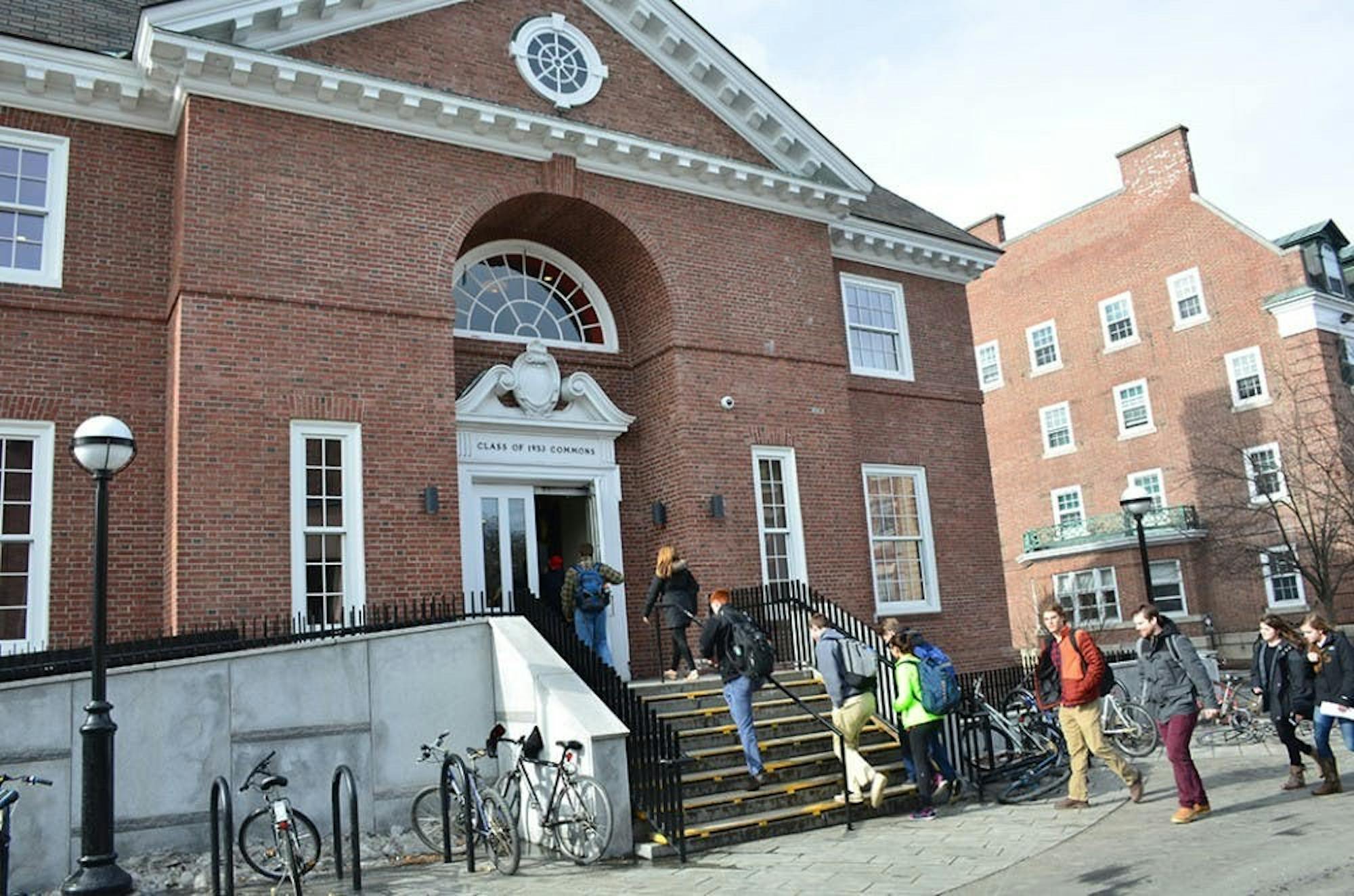On Nov. 4, Dartmouth Dining began enrolling students in a palm biometric recognition scanner system at the Class of 1953 Commons. Starting this winter term, students will be able to use palm biometric technology to enter the Class of 1953 Commons instead of swiping in with a physical ID card. The biometric technology is created by IDEMIA, a technology company that specializes in biometrics and cryptography.
According to Dartmouth Dining director Jon Plodzik, any student who wants to utilize the new system in the winter term can complete the enrollment process by visiting the signup area in ’53 Commons. The system is not, however, required.
“If you haven’t enrolled before we start the winter term, you’re going to be in a very long line,” Plodzik said. “And then you’re going to have to go into another line to enroll.”
As of Nov. 12, 789 Dartmouth students — out of the College’s more than 4,000 undergraduates — had enrolled in the new program, according to Plodzik.
Plodzik compared the system to an “E-Z pass” that allows students to “skip” the line.
There will be three lanes at ’53 Commons with biometric scanners and one lane with an employee who will swipe students in manually, according to Plodzik. Currently, there are two lanes with employees to swipe students into the dining hall. While the scanners are “not mandatory,” Plodzik said he “wonder[s]” why some students would not “use the convenience of it.”
Plodzik explained that fingerprint data is not stored in the scanner. A document written by IDEMIA, which Plodzik shared with The Dartmouth, stated that an individual’s finger image is stored as “template[s].”
“A template is a set of 0’s and 1’s created from a mathematical formula that is patented called a template generator,” IDEMIA wrote. “You cannot reverse engineer the 0’s and 1’s into the mathematical representation of the finger back to the finger image.”
When a student scans their hand to enter ’53 Commons, the system “sorts through the reference templates” to find the closest match, the document continues. Images taken by the scanners are “immediately discarded.”
Students have expressed mixed reactions to the new scanners.
Jonah Hymes ’28 said he is not concerned about the scanners collecting information because “it’s no different from FaceID on iPhones.”
“The more efficient the better,” he said. “Anything that could make [the process] faster is good.”
However, Michelle Benitez ’24 said she will not use the scanners because she does not “mind” the current system.
“I personally wouldn’t do it — I don’t mind the couple seconds it takes to hand over a card and then retrieve it back,” she said. “[But] it’s going to be up to the individual.”
In addition to rolling out the scanners, Dartmouth Dining has also restructured its meal plans. This change comes after debate over changes to meal plans last spring, including a since-scrapped proposal from Dartmouth Dining to mandate a modified version of the Ivy Unlimited plan for all “residential students,” according to past reporting by The Dartmouth.
According to the Dartmouth Dining website, any amount of leftover dining dollars will now roll over from the summer term until the end of the spring term. Before this academic year, at most 100 dining dollars, or DBA, could roll over from term-to-term.
Alexa Burns ’28 said she “love[s] the fact that all DBA rolls over.”
Additional changes to campus meal plans include limiting the number of swipes that can be used in a meal period — from unlimited to one — for those on the 115-Block, 80-Block, Apartment, or Off-Campus meal plans and increasing meal equivalency amounts for each meal period, according to the Dartmouth Dining website. Breakfast was increased from $5.25 to $6.25 and lunch was increased from $7.75 to $8.50. Dinner remained at $10.
However, Hymes still described the meal swipe equivalencies as “lacking.”
“It’s barely enough to get enough food,” Hymes said. “I can’t do a lunch swipe at the [Courtyard Cafe] and get a decent meal without it going over.”
Plodzik said swipes are now limited to just one per meal period because he noticed an “overuse” of swipes to cover costs that amounted to less than the meal equivalency of a swipe.
“People were really accelerating their purchases using meal swipes,” he said. “So instead of saying, ‘I owe $3 more than my equivalency was worth,’ they used a second swipe. And when you think about having an 80-block [meal plan] in a 10-week period, that’s never going to be enough meals.”
Dartmouth Dining also hopes to tackle “food insecurity” at the College, according to Dartmouth Dining general manager Brandon Crosby.
“We really want to be part of the solution at Dartmouth for food insecurity [and] for people who live distances far away,” he said. “They all matter to us because they’re part of the Dartmouth community.”
According to Plodzik, part of Dartmouth Dining’s solution to food insecurity is increasing access in “underserved” areas, such as the off-campus apartments at Summit on Jupiter. He said he hopes to install 24-hour “Fresh Zone Pods” — refrigerated vending machines with “fresh” foods such as salads and sandwiches from ’53 Commons — in these “strategic areas.”
According to Plodzik, the Fresh Zone Pods will use artificial intelligence visual technology to detect what students take, and charge them accordingly. The Class of 1982 Engineering and Computer Sciences Center has already held similar refrigerated vending machines in the past.
“We want Summit folks to be able to participate [in Dartmouth Dining] just as much as everybody else,” he said.




